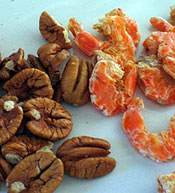I remember the first time I ever saw an Asian man with a Southern accent; I was 15 when he came on TV and did a stand-up comedy routine. I don't actually recall if he was funny, but the drawl in his voice struck me as one of the the weirdest things I'd ever come across.

But now, living as far south as you can get in Mississippi, I talk to Asians with Southern accents all the time. East Biloxi—where I've been for the last three months—is a diverse mix, 40% White, 40% Black, and 15% Vietnamese, who came here to work the vestiges of the once-thriving shrimping industry. East Biloxi, right now, is a place where you can think about Utopia. It's poor, neglected, and was ripped up by Hurricane Katrina, so that might seem like a strange thing to say. But if you can't make an omelet without breaking eggs—well, the eggs here are already broken.
As people and businesses return, sometimes with gusto, sometimes more haltingly, there is space to think about what kind of a community they want to re-create. Maybe all this thinking will turn out to be wishful, but as long as there are still people working to rebuild, wishful thinking is fuel.
So I've been cooking a lot of Utopian Biloxi food lately. What that means on my plate is food from a place where Whites, Blacks, and Vietnamese might all hang out and eat together. It started when I got some beautiful early-season turnip greens from the tiny farmers' market. I wanted to make traditional stewed Southern greens, smoky and salty from ham hocks, but remembered that I'd be eating with a friend who doesn't partake of pig. Then, in a Vietnamese store, I saw some dried baby shrimp—briny, sun-cured and umamilicious. I subbed those in for the hocks and the pot likker tasted so good, I gave a moment's thought to giving up the pig myself, which is a moment more than I ever had before. I served it with cornbread and some more local shrimp, stir-fried with traditional shrimp-boil spices and a touch of cane syrup to round it out. We may have discussed the cultural implications of these flavors at the table, but I mainly remember us stuffing our faces.
Since then, I've made macaroni and cheese by rolling up sheets of Vietnamese rice paper and dragging them through cheese sauce. (Actually, it was just butter emulsified with Parmigiano-Reggiano, so maybe we're pulling the Italians into this Utopia, too.) I've brined local quails in lemongrass. I've garnished pasta with toasted pecans and Thai basil.
At one point, we might have called this "fusion food." But much of the fusion food fad was a restaurant invention, chefs mixing things together based on whim. I don't necessarily have a problem with that, but many cuisines are the eventual, natural product of migrations, the results of adaptation rather than experimentation. The quintessentially Gulf Coast gumbo, after all, comes from the African Bantu word for okra, gombo.
The other night, I made some collard greens, stirfrying them with onion slices and a couple dashes of fish sauce, then turning down the flame to let them cook through. They were fantastic—sweet, pungent, earthy, and tender. I wondered if this was Asian food with a Southern accent or the other way around. I couldn't decide. But as I shoveled piles of it to my plate, I felt like this was food that belongs here.



 Pinterest
Pinterest


